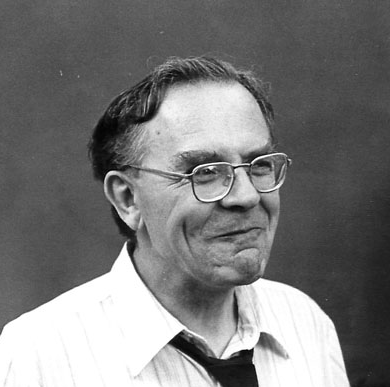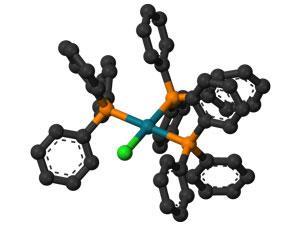Meera Senthilingam
This week, Simon Cotton brings us some catalytic chemistry…
Simon Cotton
During the 1960s, I spent six years in the chemistry department at Imperial College. There was no shortage of chemists out of the top drawer; the three sectors were headed by Richard Barrer, Derek Barton and Geoffrey Wilkinson; Barton and Wilkinson were to win Nobel prizes and Barrer should have done.
The most fitting adjective that I would apply to Geoffrey Wilkinson is dynamic. A Yorkshireman from Todmorden, he studied at Imperial. He later worked at MIT, then Harvard, where he proposed the sandwich structure for ferrocene, before returning to Imperial. It was for work on ‘sandwich’ compounds like ferrocene that he and E. O. Fischer were awarded the Nobel prize in chemistry in 1973. During his time at Imperial, he laid much of the foundation for modern organometallic chemistry. In the early 1960s, he started to look at complexes of tertiary phosphines with some of the platinum metals, such as ruthenium and rhodium.

Joseph Chatt, another great British inorganic chemist, had already examined reactions between ethanolic solutions of rhodium trichloride and trialkylphosphines. Trialkylphosphines are phosphorus atoms bonded to three alkyl chains. When rhodium trichloride combines with tertiary phosphines such as trimethyl or triethyl phosphine, the reaction gives octahedral rhodium complexes, where the three chlorine ligands are joined by three phosphine ones.
These trialkylphosphines are very air-sensitive and not the easiest of chemicals to work with. Observing that triphenylphosphine was air-stable and much easier to handle, Wilkinson asked his research student, Fred Jardine, to react it with rhodium trichloride. The first time he tried, Fred made a pale brown compound, analogous to the compounds Chatt’s group had been making, with the rhodium atom at the centre of three chloride and three phosphine ligands.
However when he tried to repeat this, he got burgundy red crystals. Fred had made a completely different compound, now known as Wilkinson’s catalyst. The complex has a square planar structure, with just one chlorine ligand and three phosphines and the rhodium is now the one-plus oxidation state, rather than three-plus as it is in the other octahedral compounds. Coincidentally, at almost the same time, the compound was prepared at University College, London, in the laboratory of Martin Bennett, who happened to be a former Wilkinson student.
The historic importance of this compound is that it was the first homogeneous hydrogenation catalyst to be discovered, and a very efficient one at that, better than the existing catalysts and operating at 25 °C under normal atmospheric pressure. In Wilkinson’s catalyst, the rhodium has a 16-electron configuration. When it is dissolved in a solvent like benzene–ethanol, one of the phosphine ligands can be replaced by a molecule of solvent. Under an atmosphere of hydrogen gas, the resulting complex takes a hydrogen molecule, breaks the H–H bond, and forms a five-coordinate complex with two hydrides coordinating the rhodium atom.

This is still a 16-electron species and also has a vacant coordination site, so it can also accommodate an alkene molecule and form a six–coordinate 18-electron complex. Next, there is a rearrangement with the alkene being inserted into one of the rhodium-hydrogen bonds to form an alkyl complex. This is rapidly followed by the transfer of the other hydrogen to the alkyl group. So the alkene has acquired two hydrogen atoms and become an alkane, which is immediately eliminated. The rhodium complex is back where it started so that the catalytic cycle can begin again.
This was the forerunner of many such transition metal catalysts, some of which have had important industrial applications. One of these complexes, featuring chiral phosphines, was devised by William S Knowles at Monsanto and enabled high-yield asymmetric hydrogenation. This facilitated the synthesis of the drug L-DOPA, an important treatment for people suffering from Parkinson’s disease and Knowles shared the Nobel prize in chemistry in 2001 for this breakthrough.
Wilkinson did not rest on his laurels with this discovery, but developed other catalysts, with both rhodium and ruthenium. This research on catalysis was only a fraction of the great discoveries in inorganic chemistry that he made in his lifetime.
I saw quite a bit of Geoff while I was doing my PhD. On one memorable occasion I was instructed only to work with mercaptans at weekends. He wasn’t my supervisor, but as head of department he had to sign my microanalysis forms. I’d go into his office, littered with chemical journals. I’d ask for his signature, please, and Geoff would always ask if it was a new compound. This was not because he was some sort of stamp collector, he had immense scientific curiosity.
Sir Geoffrey Wilkinson – he was knighted in 1976 – made several great discoveries, any of which would have been the highlight of the career of an ordinary mortal. It is worth remembering that although his discoveries were born out of his great knowledge of chemistry, they were curiosity-driven. Acting on a hunch, he would think of an interesting reaction to try out, or a compound to make. Much of the time he was right, and his discoveries turned out to have major applications. Geoff was a man who embodied ‘blue-sky’ thinking. As Geoff would have said, you don’t make great discoveries to order.
Meera Senthilingam
Birmingham University’s Simon Cotton, speeding things up with Wilkinson’s catalyst. Next week, we enter new territory…
Helen Scales
In 1891 on a beach in Tasmania a man called Louis Smith crawled inside a dead whale. As he groped through the spongy innards, no doubt choking on putrid gases, he was hoping to find himself a fortune.
Meera Senthilingam
Discover how a fortune can be made by joining Helen Scales, who is investigating Ambergris. Until then, thank you for listening, I’m Meera Senthilingam.













No comments yet